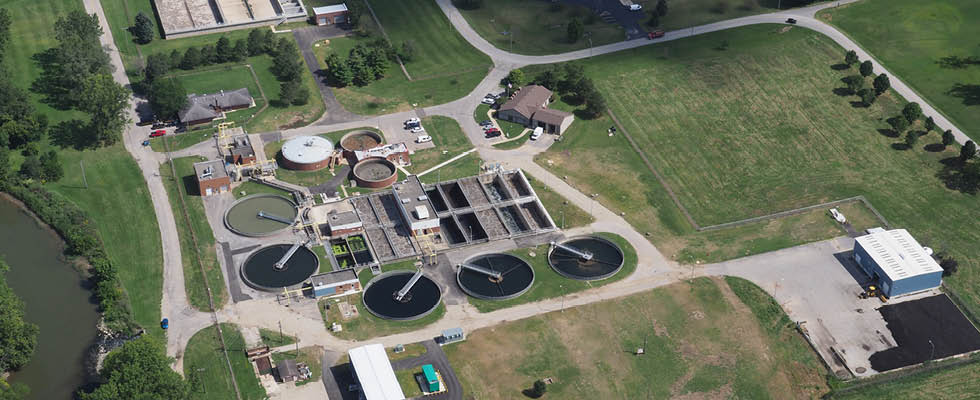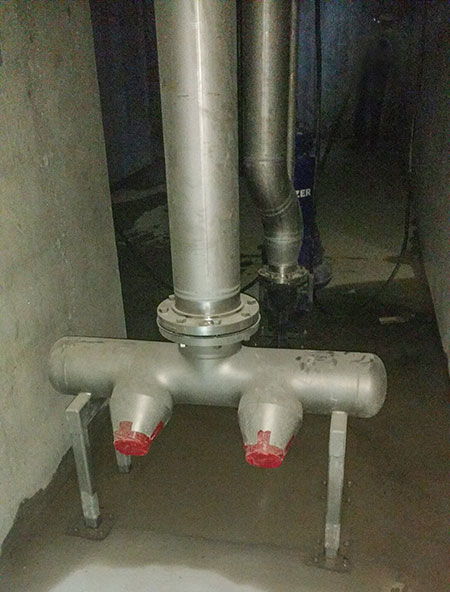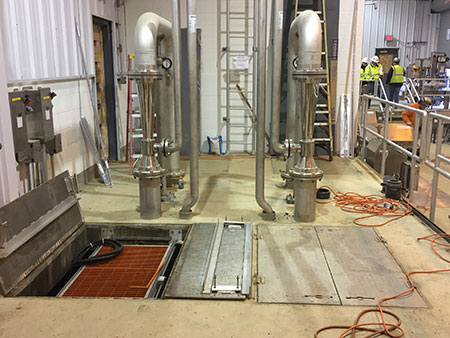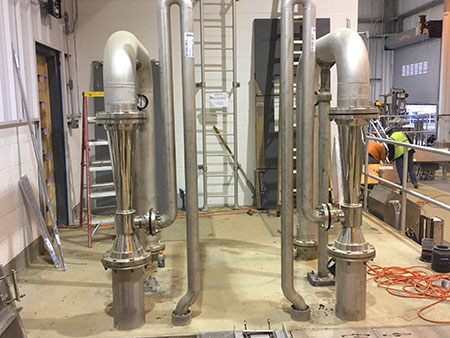
As it increased the capacity of its wastewater treatment plant in 2015, the city of Sidney, Ohio, made two changes in operations. Its new design replaced the use of chlorine gas with an ultraviolet (UV) system for final disinfection and switched to sidestream injection rather than cascade aeration for post-treatment aeration. The new design simplified operations, nearly eliminating annual maintenance and fitting the aeration step into the plant’s existing footprint.
Sidney is home to about 20,000 residents, but its wastewater treatment plant handles a load equivalent to a city twice its size, with a large wastewater stream fed by one of Ohio’s largest per-capita industrial bases. In fact, industrial wastewater accounts for nearly half of the Sidney plant’s flow.
To meet the needs of residents and businesses, and protect water quality in the Great Miami River, the city expanded its wastewater treatment plant to a peak design capacity of nearly 14 million gallons per day (mgd). The plant’s discharge
permit requires treated wastewater contain at least 6 milligrams per liter (mg/L) of dissolved oxygen (DO) before release into the Great Miami River.

Switch to Sidestream
Wastewater in the system flows through primary clarification, biological treatment, secondary clarification and UV disinfection. Replacing chlorination with UV disinfection eliminated the challenges and risks of storing and handling chlorine gas. However, the UV system consumed the remaining available pressure head that was previously used to drive the cascade aeration process, necessitating a new technology be installed to satisfy the DO requirements in the treated effluent.
Design engineers worked with counterparts at an injector company to specify a venturi sidestream injection system for post-treatment aeration. The new design employs two, parallel sidestream recirculation lines, providing flexibility for turndown capability as well as redundancy. Each line pumps 1,000 gallons per minute (gpm) through a venturi injector, where the kinetic energy of the water passing through the constriction and expansion of the flow chamber is used to create a vacuum that draws in atmospheric air and mixes it thoroughly with the water. Each aerated sidestream is then reintroduced into the main flow in a contact basin through a basin nozzle manifold whose size and configuration were fine-tuned by the equipment manufacturer’s computational fluid dynamics (CFD) modeling team.
Minimal Maintenance
Because the injection system requires a sidestream of just 20% of the plant’s flow at peak capacity, it operates on a pair of modestly sized submersible pumps. Those pumps represent the only moving parts in the aeration system. As a result, annual maintenance of the sidestream injection lines is simply a matter of pulling up the pumps on their guide rails for a quick oiling and inspection.
The other post-treatment aeration option that was under consideration, fine bubble diffusers, would have required labor-intensive inspection, gasket replacements and repairs. An analysis conducted by the management of a Canadian water treatment plant determined a sidestream injection system reduced operation and maintenance costs by 43%, cutting a full week per year out of the annual maintenance schedules.

Smaller Footprint
The Sidney wastewater plant team is familiar with fine bubble diffusers, which are part of the facility’s biological treatment system. Though the plant managers have been happy with the diffuser system in their activated sludge system, they have appreciated the lack of maintenance and labor required by the post-treatment aeration system. Reducing operation and maintenance costs is always a benefit, especially when personnel budgets are strained.
The design team also realized the sidestream injection units could be installed directly above the plant’s original, small contact basin. Since the injectors were installed within the length/width dimensions of the basin, the oxygen transfer and thorough mixing achieved by the venturi injectors and basin nozzle manifolds requires much less space, lower depth and less contact time than fine bubble diffusion. In contrast, developing a fine bubble diffuser system for the expansion likely would have required the construction of a new, larger basin and an additional building to house the blowers supplying those diffusers.
Flexible System
The amount of aeration required to maintain dissolved oxygen levels of 6.0 mg/L in the Sidney plant’s discharge
varies by season and water quality. A downstream DO sensor governs the post-treatment aeration lines, activating one or both sidestreams depending on flow and oxygen demand if DO falls below 7.0 mg/L. The paired-sidestream design of Sidney’s system provides outstanding flexibility to handle high turndown rates and helps minimize energy consumption by pairing pumping to the immediate need.

Efficiency, flexibility and ease of maintenance all made venturi sidestream injection a logical choice for the upgrade of the wastewater treatment plant and highlighted the benefits of sidestream injection.


